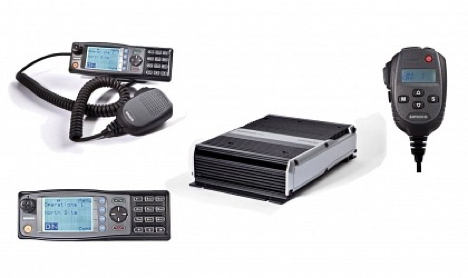Digital Mobile Radio
The standard is designed to operate within the existing 12.5kHz channel spacing used in licenced land mobile frequency bands globally and to meet future regulatory requirements for 6.25kHz channel equivalence. DMR provides affordable digital systems with low complexity and offers voice, data and other supplementary services. Today, products designed to its specifications are sold in all regions of the world.
The DMR protocol covers unlicensed (Tier I), licensed conventional (Tier II) and licensed trunked (Tier III) modes of operation, although in practice commercial application is today focussed on the Tier II and III licensed categories.
One of the major advantages of DMR is that it is an ETSI open standard and the DMR Association administers an interoperability programme which ensures compliance to the standard. Interoperability is key to the success of DMR and provides customers with vendor choice. All of the Simoco Xd range of products fully comply to the ETSI standard and their operation does not rely on any non-standard proprietary features to operate.
Digital Voice Quality
DMR digital technology provides better noise rejection and preserves voice quality over a greater range than analogue, especially at the farthest edges of the transmission range. One of the reasons that DMR has an excellent range performance is that a great deal of effort was put into selecting Forward Error Correction (FEC) and Cyclic Redundancy Check (CRC) coders when developing the standard. These coders enable receiving radios to detect and automatically correct transmission errors by analysing bits inserted into messages that enable the receiving radio to tell if there is an error. The DMR standard specifies over 14 different coders to be used, each matched to different types of traffic that is being transmitted. Through the use of coders and other techniques, digital processing is able to screen out noise and re-construct signals from degraded transmissions. Users can hear everything being said much more clearly – increasing the effective range of the radio solution and keeping users responsive to changing situations in the field.
The diagram above shows the relative audio performance between analogue and DMR radios and the effect that this has on user experience. A user of an analogue radio at the edge of the coverage area, where the signal is weak, experiences a lot of RF noise. A user of a DMR radio in the same area experiences clear audio which creates not only a better user experience but also creates a perception that the coverage is better than analogue.
Digital Mobile RadioThe standard is designed to operate within the existing 12.5kHz channel spacing used in licenced land mobile frequency bands globally and to meet future regulatory requirements for 6.25kHz channel equivalence. DMR provides affordable digital systems with low complexity and offers voice, data and other supplementary services. Today, products designed to its specifications are sold in all regions of the world. The DMR protocol covers unlicensed (Tier I), licensed conventional (Tier II) and licensed trunked (Tier III) modes of operation, although in practice commercial application is today focussed on the Tier II and III licensed categories. One of the major advantages of DMR is that it is an ETSI open standard and the DMR Association administers an interoperability programme which ensures compliance to the standard. Interoperability is key to the success of DMR and provides customers with vendor choice. All of the Simoco Xd range of products fully comply to the ETSI standard and their operation does not rely on any non-standard proprietary features to operate. Digital Voice QualityDMR digital technology provides better noise rejection and preserves voice quality over a greater range than analogue, especially at the farthest edges of the transmission range. One of the reasons that DMR has an excellent range performance is that a great deal of effort was put into selecting Forward Error Correction (FEC) and Cyclic Redundancy Check (CRC) coders when developing the standard. These coders enable receiving radios to detect and automatically correct transmission errors by analysing bits inserted into messages that enable the receiving radio to tell if there is an error. The DMR standard specifies over 14 different coders to be used, each matched to different types of traffic that is being transmitted. Through the use of coders and other techniques, digital processing is able to screen out noise and re-construct signals from degraded transmissions. Users can hear everything being said much more clearly – increasing the effective range of the radio solution and keeping users responsive to changing situations in the field. The diagram above shows the relative audio performance between analogue and DMR radios and the effect that this has on user experience. A user of an analogue radio at the edge of the coverage area, where the signal is weak, experiences a lot of RF noise. A user of a DMR radio in the same area experiences clear audio which creates not only a better user experience but also creates a perception that the coverage is better than analogue. |


